Most of the everyday food we cook at home we do so without following a recipe, so when it comes to adding salt, the quantity people use is unspecified.
But, because salt is so critical in bringing out the flavor in food, I decided to write how to use it to the best advantage, ensuring that all the food you prepare and cook is as tasty as possible.
Sometimes you will rely on the flavor and saltiness of other ingredients such as hot sauce, mustard, and sweet-and-sour sauce, but even so, you still need to be aware of the importance of salt as a flavor enhancer.
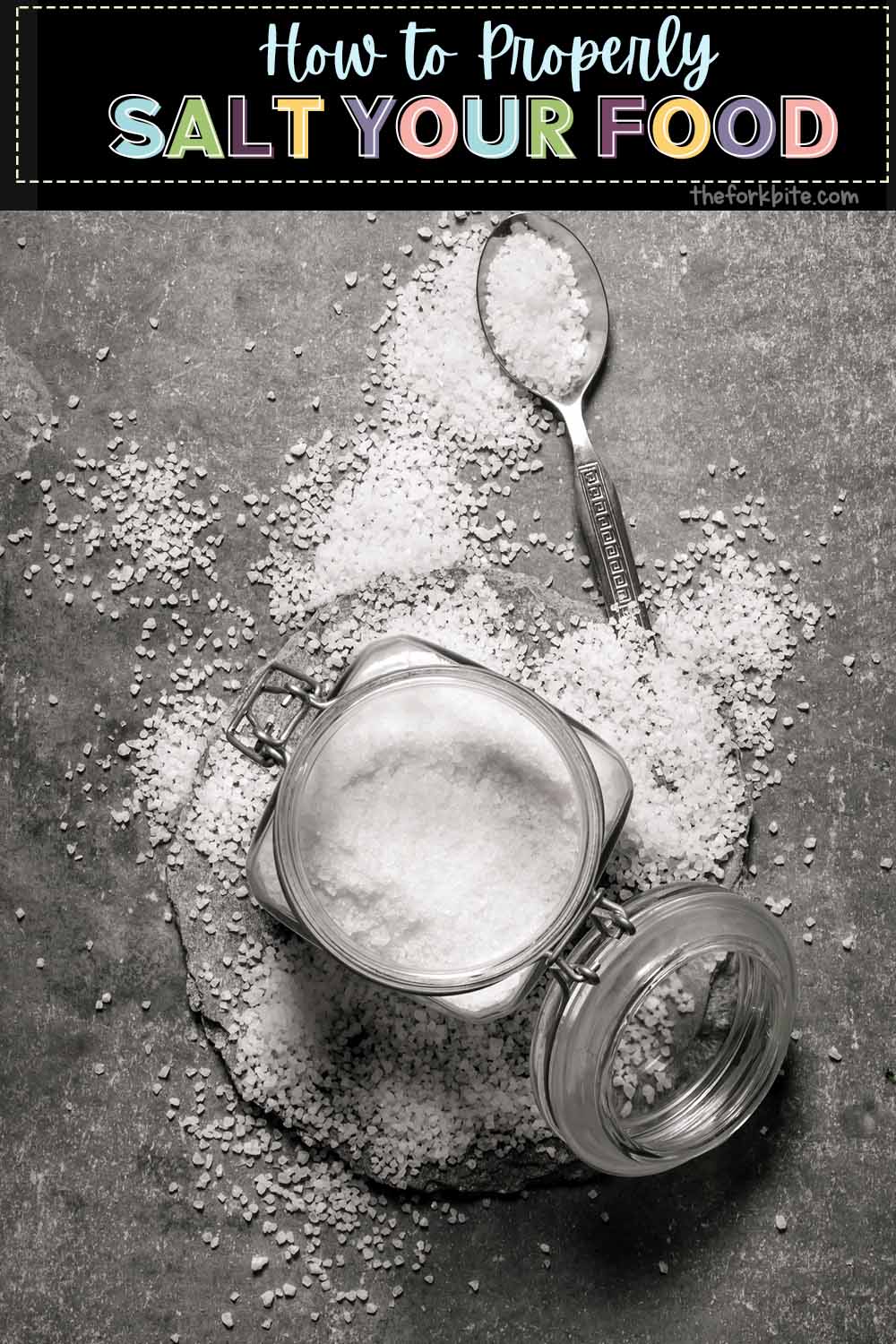
Don't forget it's one of the cheapest ingredients, so you need to know how to use it to your best advantage.
The one thing you don't want to do is make your food taste too salty. It will detract from the dish's natural flavors instead of enhancing them if it does.
Plus, of course, too much salt is not good for you. This article is all about adding the right amount of salt to not only make your food taste delicious but to keep you healthy too.
When should you add salt?
If you don't add salt when cooking food, it will taste rather bland. The ideal time to add it is right at the beginning of the cooking process.
That way, the food you are cooking will absorb the salt, becoming a part of the taste combination. If you add it after cooking, it sits on the surface of the food and tends to contrast rather than support the item's flavor.
Salting works on the same principle as marinating. It encourages whatever it is you are marinating to soak up the salt and enhance its flavor.
Many types of protein can benefit considerably by pre-salting. Adding salt before you cook proteins and then refrigerate them is a process known as dry brining.
To get the best results, you can:
- Dry brine nice thick steaks, pork chops, joint of meat roasting, whole chicken and turkeys, and their component parts for a couple of hours in your fridge for best results.
- Use boneless chicken in your fridge for just 30 minutes.
- Fish for just 15 minutes (dry brining).
If you're using other condiments or herbs and spices, it's best to apply the salt first. As the salt is absorbed into the protein, it will add all the other flavors.
Type of salt to use
If you are a new cook/shopper, you will be surprised at the varieties of salt you can buy. You will probably develop your own preferences, but let me explain my preferences and why, but first, let's take a look at the most common types of salt people to buy.
- Table salt
- Sea salt
- Coarse salt
- Kosher salt
What is table salt?
The one that most people are familiar with is table salt. It's because most people aren't cooks, and -it is the type that is commonly placed on the table - hence the name.
It comes from salt mines and gets refined, removing most minerals. Anti-clumping agents are then added, plus Iodine.
The addition of Iodine is to help prevent people from being Iodine deficient. More about this later on.
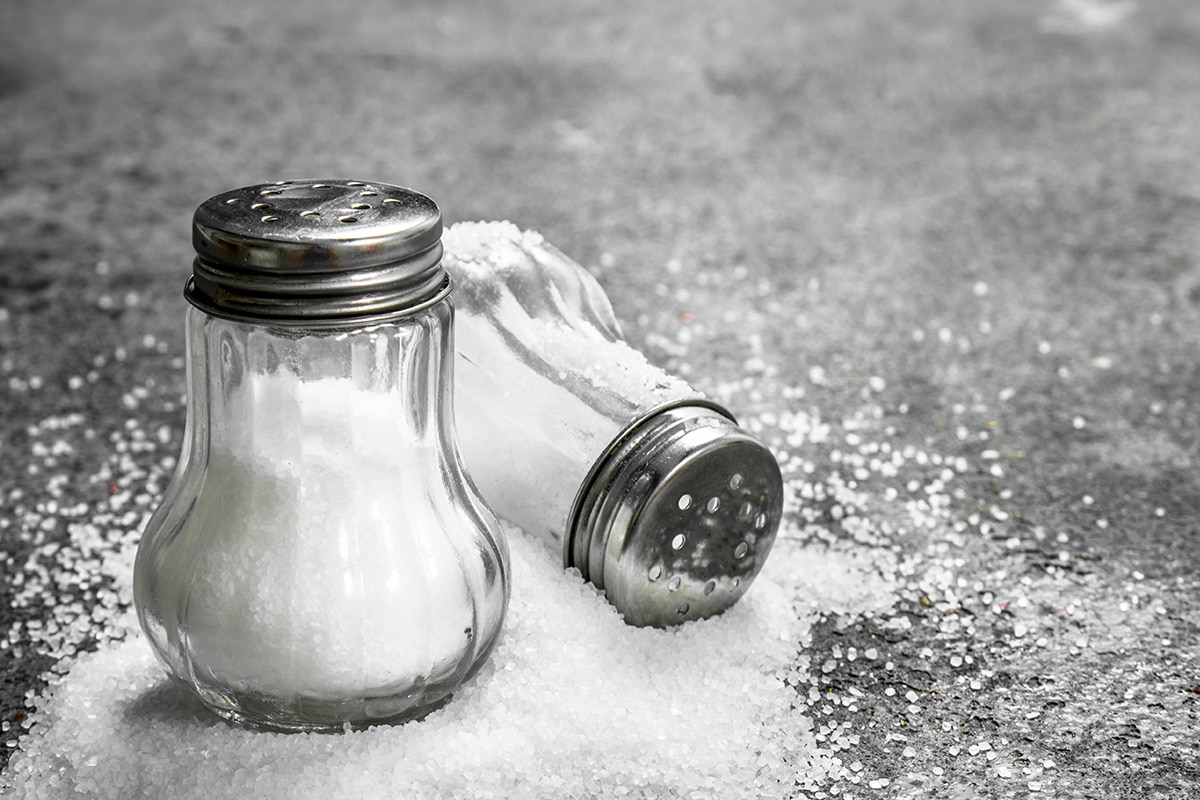
What is sea salt?
Strange though it may sound, sea salt comes from the sea - I jest of course, but it really does - well from evaporated seawater, to be more precise.
It is not refined like table salt is, which means that it contains traces of other minerals, which, according to some people, enhances its flavor.
Although it is often a healthier option than table salt, they both contain the same sodium chloride (NaCl) level by weight.
What is Coarse Salt?
Coarse salt refers to large-grained salt crystals. It can be made from either mined salt or sea salt. It usually retains less moisture than other types; therefore, caking tends not to occur –, and as such, it doesn't often contain anti-caking agents.
What is kosher salt?
Kosher salt is coarse-grained and flaky and can originate as mined or sea salt. Professional chefs like it because it's easy to pinch and handle.
They also prefer it because it is free of anticaking agents and additives like Iodine. Because of its flaky consistency, there is less salt in a teaspoon of kosher salt than table salt.
The name "kosher salt" can be a little misleading. People automatically assume that it's Jewish, but that is not necessarily the case.
Genuine Jewish kosher salt is referred to as Kosher certified salt, and it is certified in terms of guidelines outlined by Jewish law and verified by kosher certification agencies.
Ordinary kosher salt is not certified in the same way, but its processing conforms to some of the guidelines laid down by Jewish law.
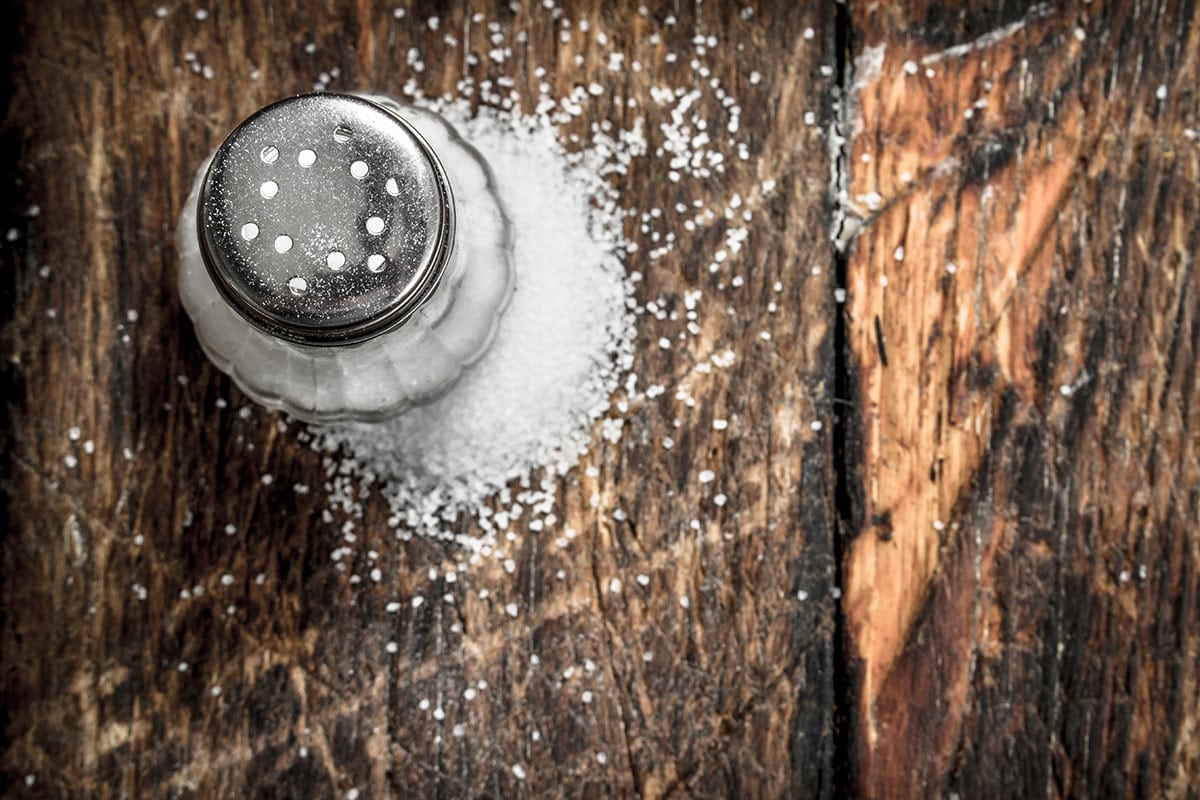
An interesting thing about kosher salt is that the term "kosher" doesn't really describe the salt - it describes what it is used for.
Kosher butchering describes a process whereby blood is bled out of meat, and salt was applied to facilitate this process. Hence it became known as kosher salt.
When it comes to salting meat and proteins, I prefer the kosher variety, be it ordinary or certified. Another reason I prefer it is that it dissolves much easier than table salt.
It's nice and simple to pinch between your fingers and sprinkle over the protein, and you can see exactly how much you've applied.
The two most popular brands of kosher salt are Diamond Crystal and Morton's Kosher salt. My personal preference is Diamond Crystal.
That's because the grains are lighter than Morton's, whose crystals are somewhat denser, making it easier to oversalt your food unwittingly.
Note:
When baking with kosher salt, you do have to be careful as the consistencies don't quite line up with table salt.
So please use the following conversions:
- For 1 teaspoon of granulated salt - use 1¼ teaspoons of Morton's
- For 1 teaspoon of granulated salt - use 1¾ teaspoons of Diamond Crystal
Using flavored salts
You can use flavored salt to add another taste element rather than just the salt itself.
Smoked salt has a lovely smoky flavor and is great for using when barbecuing or when you're grilling meat but not using a smoker.
You can also buy truffle salt, adding a lovely earthy garlicky-type taste.
How much salt should you add during cooking?
As a rule of thumb, the thicker the protein, the more salt you can add. It gets absorbed during the cooking process.
To illustrate what I mean, take a 2-inch thick steak. If you give it a light sprinkling of salt, you will be able to detect the flavor on the surface of the meat and just below.
However, it won't work its way through to the middle. To get a slight saltiness in the middle of the meat, you need to add more salt.
If you're cooking big cuts of meat like a roasting joint of beef, a whole chicken, or turkey, make sure to cover the entire surface with salt.
For thinner proteins, such as skinless chicken or fish, only apply a light to the medium sprinkling of salt. If using kosher, sprinkle it, so there is a small space between each flake.
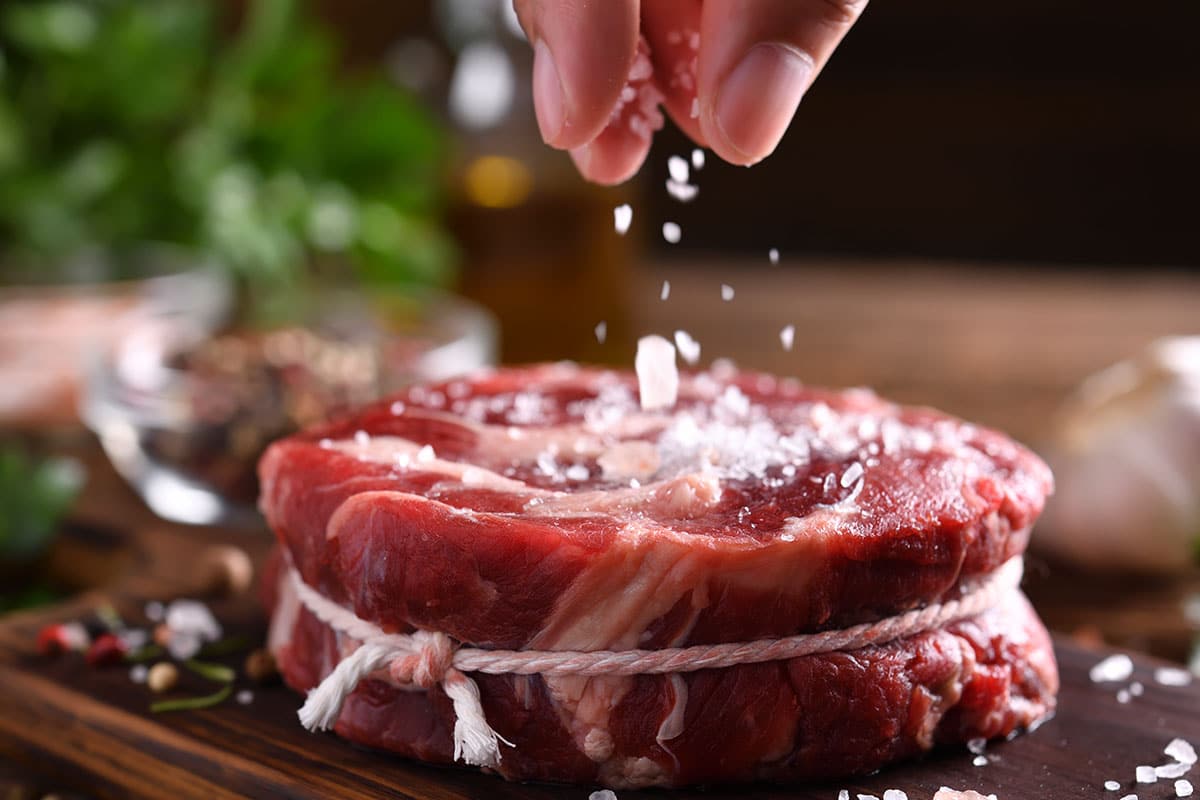
Salting starchy foods
When you are boiling food, you should add salt to the water. This enables the salted water to be absorbed into the food, whether beans, pasta, or potatoes.
1 Pasta
When salting the water for pasta, you need to add a generous amount. Don't worry. Not all of the salt will be absorbed by the pasta. It will, however, absorb enough to give you a perfect flavor sensation. As a rough guide, I usually add 1 tablespoon of salt for each quart of water.
2 Quinoa
When boiling rice or quinoa, I usually allow one half a teaspoon of granulated salt for each cup of rice or quinoa.
3 Mashed Potatoes
When boiling mashed potatoes, usually add 2 teaspoons of salt per pound of potato. That's just right for my family and me, but if you feel it's not quite salty enough when you've finished mashing, having added butter, or whatever else it is you might use, you can always add another pinch or two and mix in just before serving.
Always taste before you serve
You should always taste a dish before you serve it, regardless of what it is. If it has been under-salted, it might taste under-flavored, and a small sprinkling before serving can brighten up the taste to more like what you were expecting.
But always remember to add a small pinch at a time. You can always add more if necessary, whereas it can be difficult to downgrade if you add too much.
"Salt to taste" explained
You may often encounter the expression "salt to taste" in a recipe you are preparing. But what does it really mean? Here's my take on it.
When cooking with salt, it plays a significant role in two ways:
- It reduces any bitterness the dish may have
- As a result of cutting down the bitterness, it also allows the aromas and flavors of the other ingredients to stand out.
Sometimes you might find you've cooked a dish that tastes relatively flat or perhaps a little bitter. But you may find that all it needs is a sprinkling of salt.
It's certainly worth trying before adding other things like spices or other seasonings that might alter the balance of the flavor. Try a three-fingered pinch of salt first and see if that does the job. It usually does.
Don't forget what I said above; always add a little at a time and taste test before adding more.
Remember, you don't want the dish to taste salty. What you're looking for is allowing the flavors to shine through, and that's what salt does - it's a great flavor enhancer.
How does salt work?
The chemical name of the salt is sodium chloride, or NaCl, in terms of chemical symbols. Here is why according to the sciencefocus.com website, it works as a flavor enhancer.
It was once thought that your tongue was split into separate sectors that detected the five various tastes of bitter, salt, sour, sweet, and umami.
However, recent research has indicated that individual taste cells lining the tongue react to different tastes according to different sensitivity levels.
Salt works as a general flavor enhancer since, in low concentrations, it reduces bitterness while increasing sweet-sour and umami flavors - perfect for some desserts.
On the other hand, higher salt concentrations suppress sweet flavors and enhance umami - great for savory dishes.
The importance of salt to make food taste better
I've rambled on for some time about the importance of salt in terms of its ability to enhance flavor.
It's a subject that has come under much scientific scrutiny, as a publication entitled "Chemical Senses" written by Paul Breslin and Gary K Beauchamp illustrates. You can download a PDF copy from the researchgate.net website.
The topic generates much interest not just because of salt used in the kitchen but because from a health point of view. It is essential for human life.
Know when to salt your protein
You cannot do without salt when you cook meat. Some dishes require brining, which is a process whereby meat is soaked in salted water (brine) before cooking.
If you were to cook the same piece of meat in two ways, brined and un-brined, you would find an amazing difference in flavor, with the brined protein tasting much more vibrant.
But it's not just the taste that brining meat brings to the party. It also encourages the meat to retain moisture by denaturation of the proteins.
A process that allows liquid to be absorbed, resulting in a beautifully tender and tastier final product.
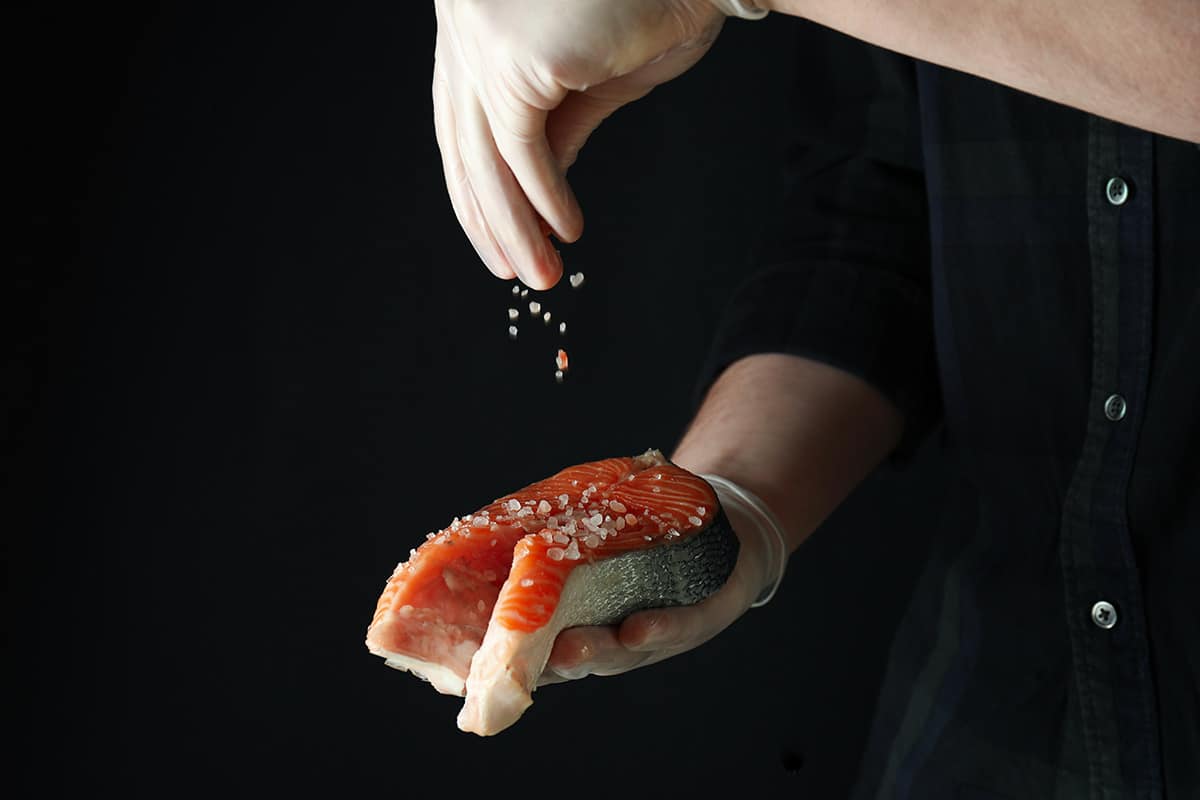
Another advantage of brining is that when applied to cheaper cuts of meat, which are notoriously tough, it helps to make them more tender.
As with most things in the culinary world, there are always two sides to any argument, and such is the case with brining.
One school of thought recommends that brining in advance is essential, while another maintains it is best to brine just before cooking.
Very often, the best way to decide such arguments is to refer to a cooking celebrity, and in this case, I refer you to the one and only Betty Crocker.
I'm cheating a little bit because Betty wasn't actually a real person. She was a fictional character created by General Mills in the 1920s.
However, the name has become synonymous with good food, and I refer you to the Tips for Brining page on the BettyCrocker.com website.
Let's not forget the veggies.
On first hearing the word "disgorging," it sounds a little concerning and uncomfortable.
However, fear not. All it is, a term that means drawing out any excess liquid in things like eggplant, tomatoes, and zucchini that might otherwise impact negatively on the dish you're cooking.
For example, using watery eggplant to make a moussaka could result in a rather wet mess.
The way to disgorge veggies is to slice or grate them beforehand, then sprinkle over a thin coating of salt on one side and let the veggies sit there for between 10 and 15 minutes.
You can then flip them over and salt the other side and when done, blot away any excess liquid (and salt) with a sheet of paper kitchen towel.
Some recipes call for blanching vegetables, and once again, I recommend adding salt to the water beforehand.
If you and your family like roasted vegetables, a sprinkling of salt really brings out the flavor. It works terrifically with carrots, parsnips, and potatoes, to mention but a few.
When it comes to steaming vegetables, you need to be much more conservative with the use of salt. Steaming rather than boiling is a well-known method for bringing out the flavor of vegetables.
So you don't want to over-salt them and make the salt fight with the natural flavors—a little light salting just before you serve is recommended.
Can you un-salt a salty dish?
As I have said several times in the text above, it's important to salt a little at a time and test taste. If you over-salt, it is challenging to cancel out.
It's the reason that many home cooks end up serving under-salted food. It tastes awful. Of course, over-salting is not good for your health, which is why it's so essential to salt as you go.
There is an old wives tale about adding potato into over-salted soup. It is supposed to absorb the excess salt. It is true, but only to a minor extent. The dish will still end up tasting too salty.
Why Iodine is added to salt
Iodine is an essential element of human life. At the earliest time of our life cycle, this hormone is necessary for developing the human brain and nervous system during fetal development and through childhood. The body uses it to create thyroid hormones.
Without it, problems like dwarfism, hearing loss, and mental retardation become prevalent.
The body utilizes the thyroid hormone to control its metabolism in adult life. If your body doesn't produce enough of this hormone, your thyroid gland swells, creating what is known as a goiter.
As well as having a slow metabolism, your thinking skills can be damaged, you can become infertile, and you are more susceptible to thyroid cancer.
The first time Iodine was added to table salt in the US was in May 1924. Within 10 years of its introduction, the number of people with the goiters fell from 30% to below 2%.
Iodine is also naturally present, in small quantities, in sea salt.
Using salt to finish a dish
You will find that many professional chefs often add salt just before serving the dish.
It is added at the last moment for two reasons:
- First, salt is added to the dish to brighten its flavor considering it is added at the last moment, it doesn't lose its structure or absorb by the food.
- Secondly, because it can hold its structure from residual heat or moisture, it adds a pleasant crunchy texture to a dish due to the salt crystals have no enough time to lose its shape.
Some top chefs use fleur de sel (pronounced "flure-de-sell") as a final flourish when serving a dish. It has a first-class purity of flavor.
Once added, fleur de sel dissolves very quickly, is no longer visible, and has no texture.
Its delicate flavor, however, does linger on the food. One of the reasons that it's primarily professional chefs that use it is because it is very expensive.
It works well with certain desserts too, which is why you'll find it served in many high-end restaurants.
Originally, fleur de sel came from the Guerande region in France.
Salts to use according to its purpose
Which salt to use to finish or season a dish?
From the point of view of their chemical makeup, salts are almost identical and contain around 95% sodium chloride.
There are, of course, minimal differences between the various types of salt, depending on where they originate.
1 Reddish pink salts
These types of salts owe their coloring to containing quantities of iron oxide - yes, the same name for rust.
What makes these variants of salt stand out from their peers is the size of their crystals.
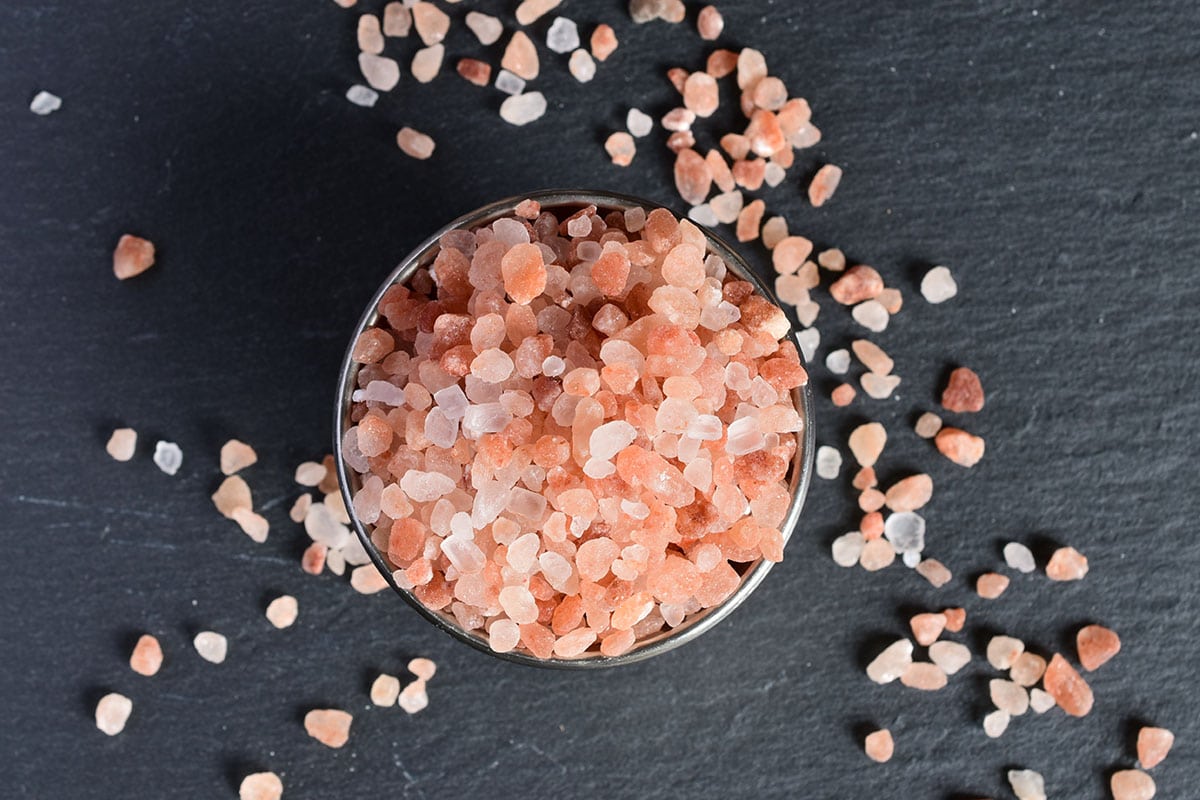
They are perfect to use from a presentation perspective. They will not penetrate the food onto which they are sprinkled very easily.
Therefore, they also generate a satisfying crunch while delivering a salt explosion on the tongue.
Red Hawaiian salt owes its color to the clay in which it is found and is a great favorite when sprinkled on pork.
2 Coarse sea salt
Coarse sea salt works brilliantly when sprinkled onto sweet desserts, giving them a satisfying crunchy texture that delivers a salt explosion when bitten.
It is also often used for brining meat and, when applied generously, forms a lovely salty crust.

3 Fine table salt
Because fine table salt has such small crystals, they are perfect for penetrating deeply into the food on which they are sprinkled, making this type of salt very popular for brining.




